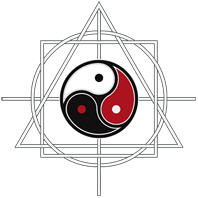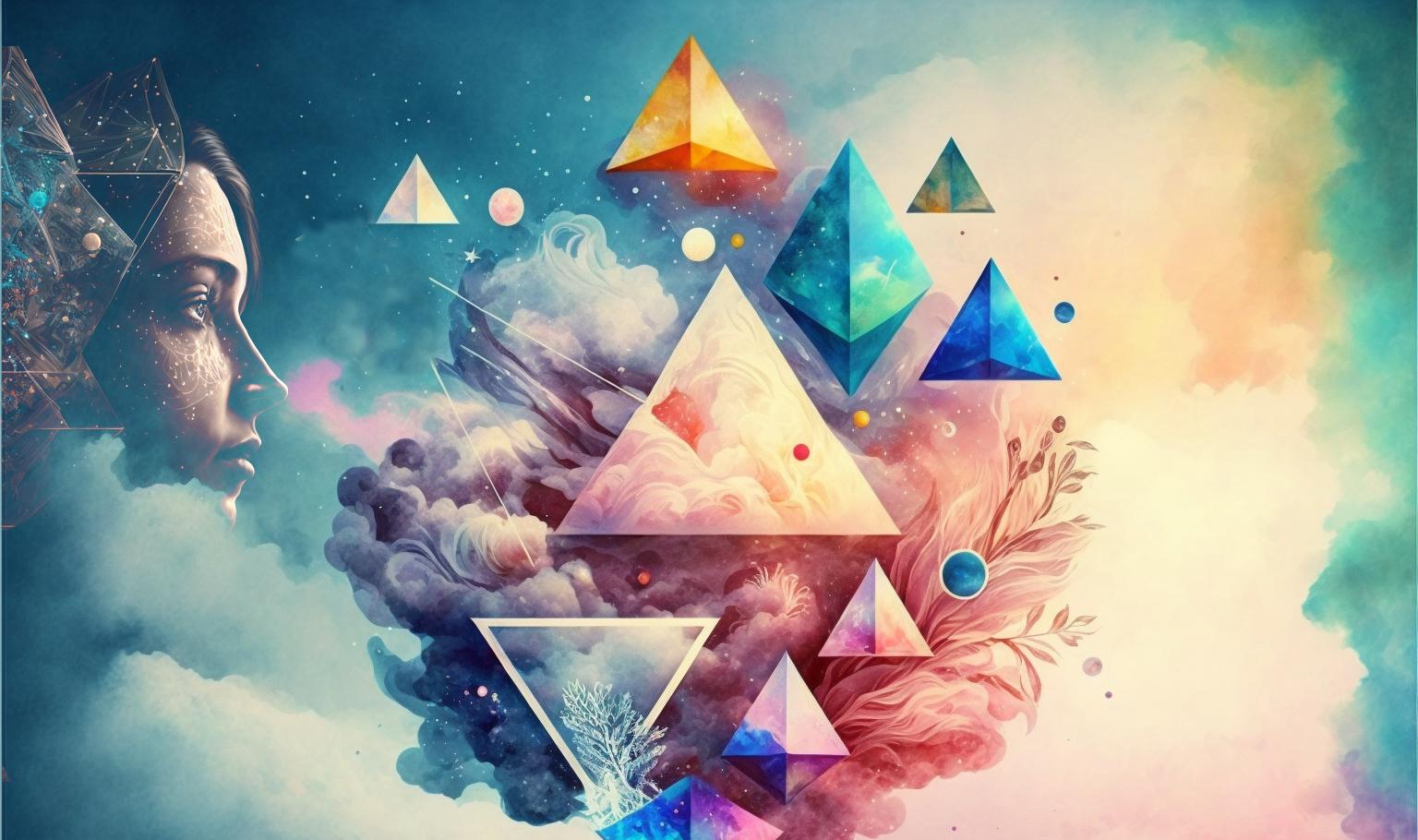
The First Personality Reading Based On
The Sacred Geometry Of Your Name Symbols.

Philosophy, Logos, Anthropos and Cosmos
In the 6th century B.C., someone said to Pythagoras, an illustrious Greek mathematician: "You are a wise man". Pythagoras then answered: "No, I am not a wise man, I am only in search of wisdom. I am a friend of wisdom. I love wisdom. Thus was born the word philosophy.
From the Greek, the term philosophy (philos: love and sophia: wisdom) means love of wisdom. The philosopher is therefore a lover of wisdom.
⚠️ Unless it's the Wisdom of Love, the Word, or Divine Link... ⚠️
Love as this aspiration of the soul towards that which is above, this real force that drives the soul towards the higher spheres.
The proposals and the ways have been very diverse, but the characteristic of the classical approach is the need to bring together the mind, the soul and the body. Beyond the multiplicity of paths, it is the common point that links them all: thinking and acting in the same direction.
1. The notion of Logos
The Greek word Logos has many meanings. It comes from the Greek legein, which means to gather, to unite, to collect. By extension, it refers to reason, word, language, which link things together and make their relationships appear.
In philosophical discourse, Logos is seen as the rational principle that underpins and orders the universe, providing coherence and intelligibility to all things. This concept was central to the thought of philosophers like Heraclitus, who viewed Logos as the fundamental order of the cosmos. In theological contexts, particularly within Christianity, Logos takes on a profound significance, most notably in the Gospel of John where it is used to describe Jesus Christ as the divine word made flesh, the ultimate expression of God's reason and creative power manifest in the world.
2. The notion of Anthropos
"Anthropos," the Greek word for "human" or "man," encompasses the essence of humanity, delving into the nature, existence, and experiences of human beings. Philosophical inquiries into Anthropos often address profound questions of identity, consciousness, morality, and the human condition. It reflects on what it means to be human, exploring the capabilities and limitations that define human nature. This term invites an examination of humanity's place in the world, its relationship with the divine, and the ethical responsibilities that come with human existence, shaping a comprehensive understanding of the self in relation to others and the cosmos.
3. The notion of Cosmos
"Cosmos," derived from the Greek word for "world" or "universe," signifies the ordered and harmonious nature of the physical world. It embodies the concept of the universe as an intricate and coherent system governed by natural laws and principles. In philosophical and scientific contexts, Cosmos refers to the entirety of the known universe, characterized by its vastness, complexity, and inherent order. This term evokes a sense of wonder and curiosity about the universe's origins, structure, and the underlying principles that maintain its balance and beauty. The study of the Cosmos encompasses both the macroscopic view of the universe as a whole and the microscopic examination of its smallest constituents, reflecting the profound interconnectedness of all things.
From ancient China to Greece, from Siberia to the Christian world of the pre-Columbian Maya to Pharaonic Egypt, the common denominator of all Traditions is that of an esoteric constitution of man based on a ternary structure of the Universe.
From this observation of the ternary structure of the Universe and Man, Plato's Greece conceived a ternary structure, a direct reflection of the structure of the Universe: Soma or physical part, Psyche or psychological part linked to the Soul (Psyche: Soul) and Nous, the spiritual part in Man.
Creation is divided into three interlocking spheres: the material world symbolized by the Earth, the spiritual world symbolized by the Sky and the intermediate world, symbolized by the atmosphere, linking the two previous ones, in which man lives.

Man is in this vision considered as a "microcosmos" or Small Universe, and has in itself the same organizational structure as the Universe, the "macrocosm".
The Cosmos is a notion invented by Pythagoras to translate an organized whole whose harmony is regulated on the principle of proportion.
The universe consists of a body and a soul. The Body of the World comes from the combination and the proportioning of four elements: it first took fire (without which nothing is visible) then earth (without which nothing is solid) and to unite them in proportion, it took two means, air and water, so that what fire is to air, air is to water and what air is to water, water is to earth.
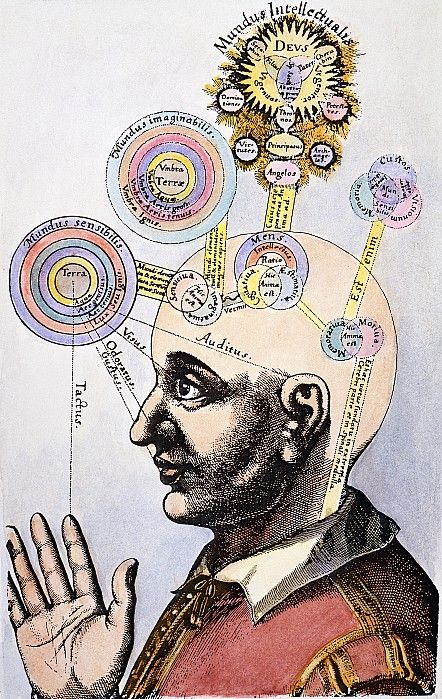
The chambers of the Mysteries
We must begin by distinguishing the adjective "esoteric" from the noun "esotericism". The adjective precedes it and comes from the Greek "esôtirokos", which means "to go inwards". It is opposed to "exoterikos", "towards the outside". The word esotericism is composed of the root eso which means inside and ter which evokes an opposition.
This is the "arcane discipline", the strict distinction between initiates and profane. "Secret teachings", voluntarily hidden and reserved for certain people.
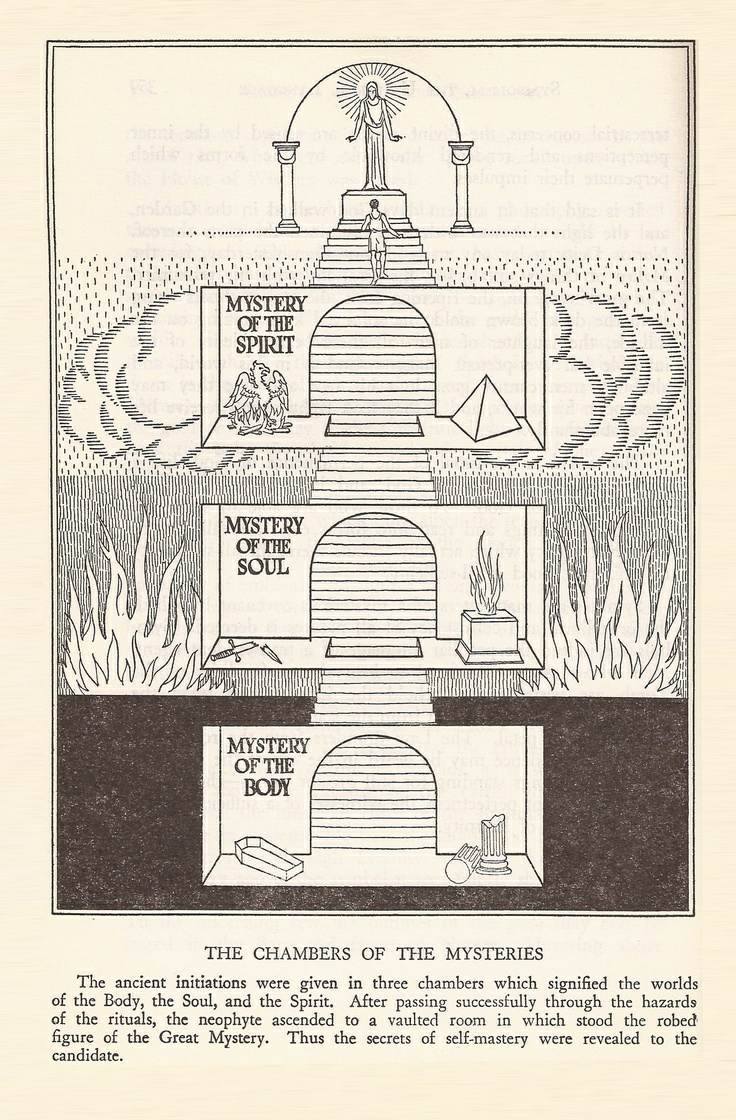
History records that the greatest thinkers of antiquity who were born in the West went on to complete their education in Egyptian mysteries.
The Science taught by the holders of these mysteries is known under different names: Occult Science, Hermeticism, Magic, Esotericism, etc.
Identical in its principles, this code of instruction constitutes the traditional Science, which we generally call: Occultism. […]
The immutable part (of occultism) can be divided into three points:
Etymologically, the term analogy comes from the Greek ana, above, and from logos, speech, reason, reasoning. The analogy is the discourse with the top. The term analogia in Greek also means mathematical proportion.
This term is opposed to analysis comes from the Greek ana, above and lysis, from the ancient Greek luein meaning to release, untie and translate the idea of dissolution.
It is at this moment that man becomes aware of a universe where, as Guénon says in Symbols of Sacred Science :
The role of analogy is to provide man with a means to unite with the High, with the Divine. It appears as the science of the link between the up and the down. The key term of analogy could be "like" or "is like" (sicut in Latin).
Matila Ghyka specifies in The Golden Number that the concept of analogy corresponds etymologically to the Greek analogia, and translates the term proportion, as suggested by Vitruvius in his De architectura (25 B.C.).
Analogy allows us to understand the relationship between the part and the whole.
Analogy allows one to rise from the sensible to the intelligible and facilitates the ascent. The prefix ana indicates the idea of a movement from bottom to top, and designates the movement back to the origin.
Analogy is the faculty of intelligence that allows us to establish links. It is the basis of creativity, the principle of which is to establish connections between things that apparently did not have any between them.
The analogy is largely based on ternary law, correspondences theory and the use of symbols.
See next section.
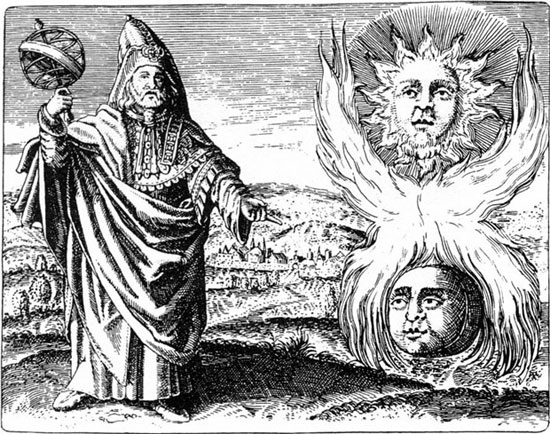
The central role of man
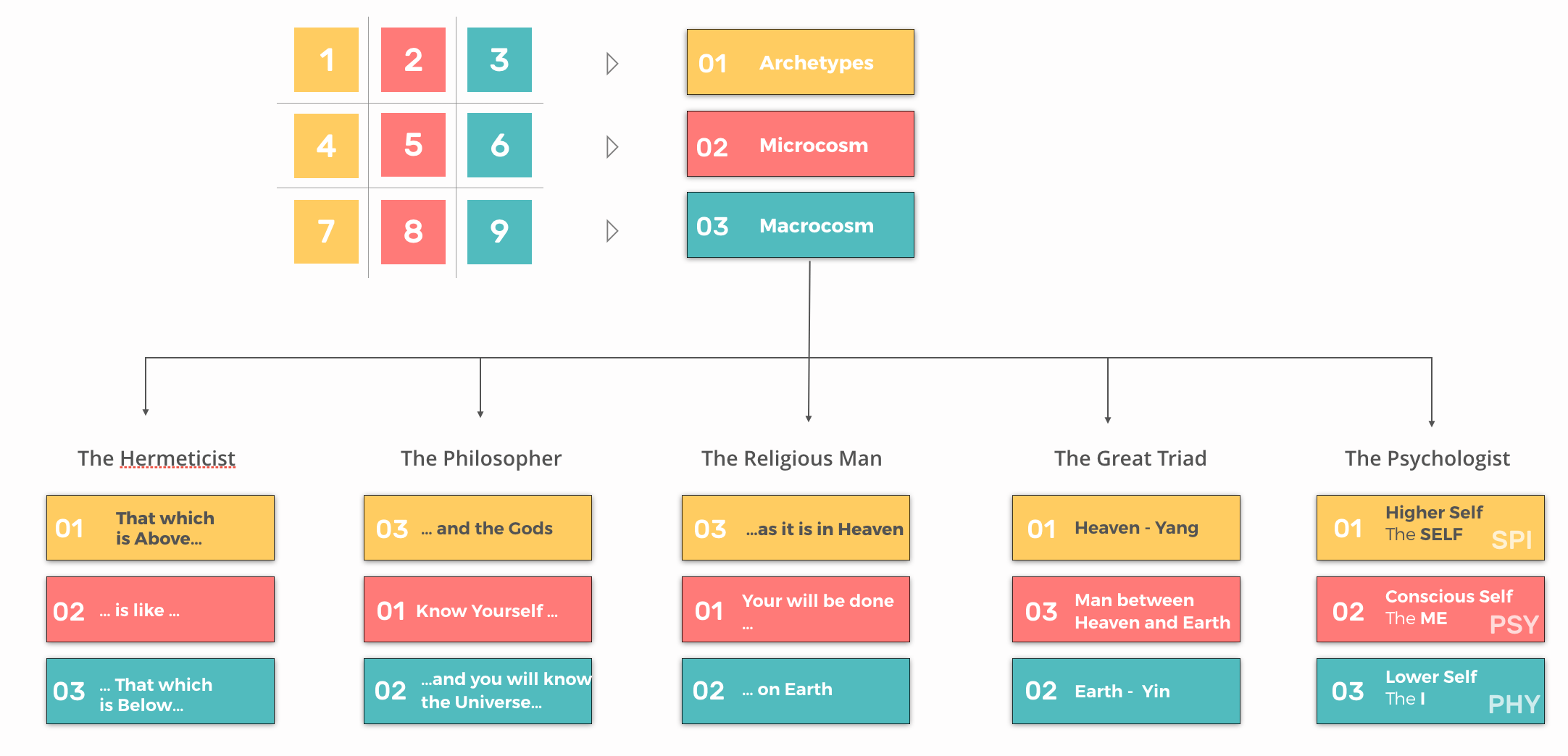
In the Emerald Tablet, Hermes Trismegistus writes : “That which is below (on earth) is like that which is above (in heaven).” If we compare this phrase with the verse from the Our Father, “Your will be done on earth as it is in heaven,” as well as the famous saying “Know yourself”, we can say that Hermes describes something (knowing) while Jesus wishes for it (wanting) and Socrates gives us the procedure to be followed (daring).
On the pediment of the Temple of Delphi it was inscribed, "Know thyself," but few thinkers have understood this precept.
It is believed that to know yourself means to know your character, your weaknesses, your qualities. No, it is something much higher. If it were only about psychology, it would never have been written on a temple!
True knowledge is fusion. To know oneself is to identify oneself, to merge with the Self, that higher Self which is above in the region of the mind, the spiritual world.
This law of analogy, so well formulated by Hermes, is a key that allows us to obtain information about the invisible world from the data of the visible world.
When we talk about the invisible world to certain people, we immediately see them shrugging their shoulders. Yet the invisible world does exist. Our thoughts are invisible, the air is invisible.
For the Science of Initiation, there are three worlds:
Jung's archetypes and Plato's Ideas share notable similarities, particularly their universal nature and their role as transcendent models.
Both propose fundamental structures that exist beyond individual and cultural experiences, profoundly influencing human understanding of reality.
Jung's archetypes, although rooted in the collective unconscious, and Plato's Ideas, existing in a transcendental world, serve as essential frameworks for interpreting behaviors, symbols, and universal concepts.
Additionally, both concepts play a crucial role in the quest for understanding and knowledge. Jung's archetypes help decipher recurring symbols in myths, dreams, and cultures, revealing profound aspects of the human psyche.
Similarly, Plato's Ideas offer a perspective for attaining true knowledge by transcending material appearances and accessing perfect forms.
These universal and timeless models, while distinct in their origin and application, illustrate a common search for truth and meaning at the heart of the human experience.
From numbers to ideas
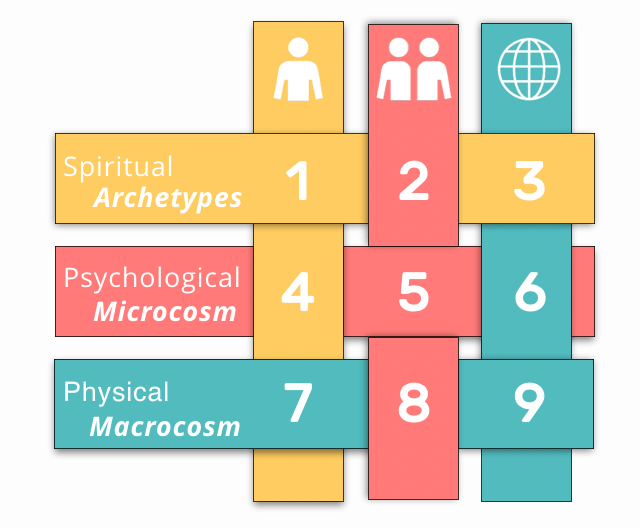
As we have seen above, in esoteric teaching of Pythagoras, the number 4 and the number 7 are the reflections of the Divine World in the Human World and in the Natural World, then there must be a human reflection in the Divine and Natural Worlds as well as a natural reflection in God and Man .
In the following section, we will continue the interpretation in a vertical way by trying to define the three propositions or attributes associated with each of the Three Worlds.
This is a kind of Pythagorean table, where the elements of study play the role of numbers, as used by the initiates of the Pythagorean School.
When you have drawn up the tables of several principles, you can move on to an even more interesting exercise: comparing of each of the principles with all its analogues in the other tables.
